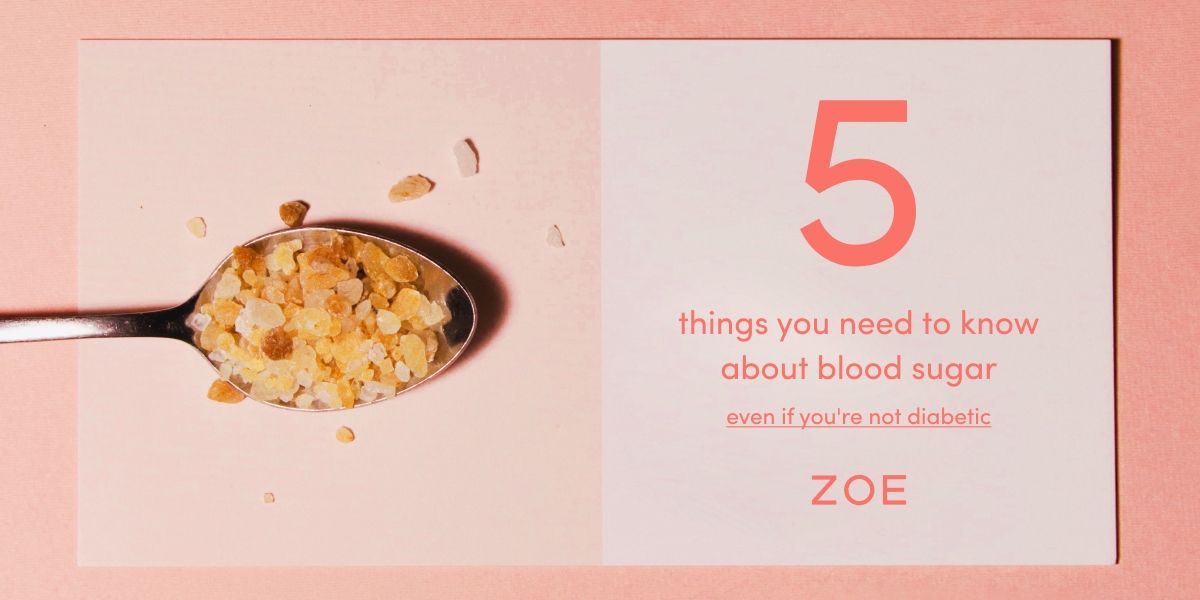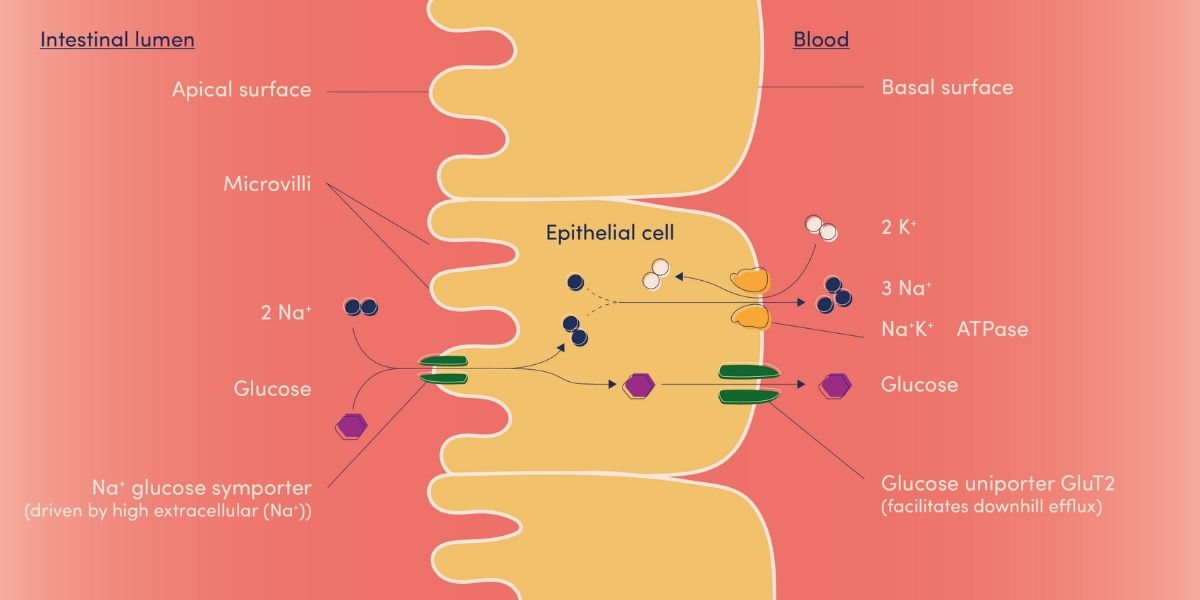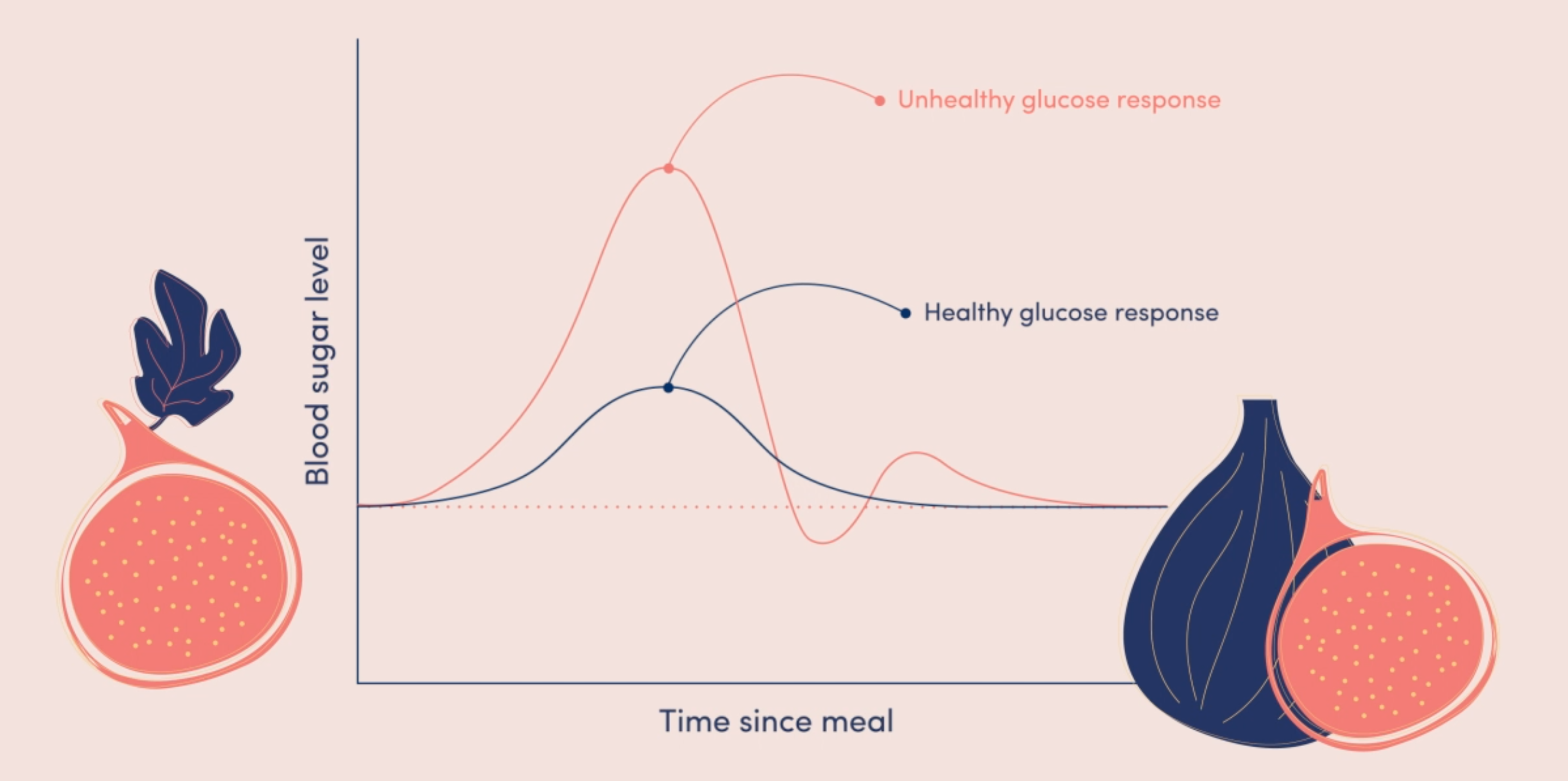June 18, 2020
•

How your blood sugar changes when you eat is a crucial indicator of your health. In this post, we share 5 things you need to know about blood sugar control (whether you have diabetes or not):
When you eat, the food makes its way down into your stomach where the digestion process begins. Then the partially digested food passes into your intestines, where enzymes continue to break down the components of your food into smaller building blocks.
Carbohydrates in your food are broken down into sugar (or glucose if you want to be more scientific), which passes through the walls of your intestines and into your blood. Once the sugar from your food enters your blood, it is transported around the body to wherever it’s needed.

High blood sugar can be toxic, damaging your cells and causing inflammation. But low blood sugar means your body won’t have the energy it needs to function, making you feel tired and hungry. Very high and very low blood sugar are both extremely dangerous, but even more moderately unhealthy glucose responses can lead to health problems.
Unhealthy blood sugar responses after eating have been linked to an increased risk of developing type 2 diabetes, having a heart attack or stroke, and even developing certain types of cancer. So maintaining your blood sugar levels is a crucial part of staying healthy.
But what does a healthy or unhealthy blood sugar response look like?
We all have increased blood sugar after we eat. It’s the job of a long, flat organ called the pancreas, tucked just behind your stomach, to sense the amount of sugar in your bloodstream and act if the levels get too high or too low.
When your blood sugar levels start to rise, your pancreas produces insulin. Insulin is a hormone that encourages your cells to take up more sugar, helping your blood sugar levels return to a level that’s normal for you (sometime known as ‘baseline’).
The differences between a ‘healthy’ or ‘unhealthy’ response are about how high your blood sugar goes after you eat, how long it stays high, and whether your blood sugar dips below baseline before stabilizing.

There are a few different ways to monitor your blood sugar:
Several diets designed to combat unhealthy blood sugar responses have been created in recent years. They have been publicized as ‘the’ way to lose weight, avoid chronic diseases, and support your health. But do these blood sugar diets work?
Most ‘blood sugar diets’ are low-carbohydrate diets. They claim to control your blood sugar by reducing unhealthy responses to food and preventing blood sugar spikes.
Some fans of these diets point to studies where low-carbohydrate diets have improved blood sugar control in the majority of the participants.
But here’s the catch: you are not the majority of people. You are you.
Research is increasingly showing that while some people respond better to a low-carbohydrate diet, others are better off on a low-fat, high-carbohydrate diet.
Our PREDICT studies have found that even identical twins, who share all their genes, can have very different responses to the same foods.
That means that a diet that helps one person may not be right for you and could even be unhealthy. Improving your nutritional responses is not as simple as eating a particular prescribed diet or sticking to foods labelled as 'good for your blood sugar.'
Keeping your blood sugar healthy is all about eating the foods that you respond to best. To do that, you need to understand how your metabolism responds to different food - your ideal diet is the one that works best for you.